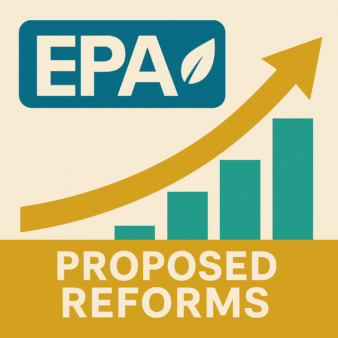 The EPA has proposed a major revision to the Biden-era refrigerant transition rules, offering relief to contractors, distributors, and manufacturers who’ve been bracing for 2025 compliance deadlines. The move could push back enforcement in key sectors, giving the industry as much as five years to adapt — but it also raises new questions.
The EPA has proposed a major revision to the Biden-era refrigerant transition rules, offering relief to contractors, distributors, and manufacturers who’ve been bracing for 2025 compliance deadlines. The move could push back enforcement in key sectors, giving the industry as much as five years to adapt — but it also raises new questions.
When the 2023 Technology Transitions Rule landed, it set a hard date: January 1, 2025. From that point forward, most new residential and commercial HVACR systems were supposed to ditch high-GWP HFC refrigerants. The idea was simple on paper — line up with the AIM Act and accelerate the shift to lower-impact alternatives.
But two years later, the ground is shifting. On September 30, 2025, EPA Administrator Lee Zeldin announced a Notice of Proposed Rulemaking (NPRM) to reform the 2023 rule, pointing to shortages of approved refrigerants, safety concerns with ammonia and CO₂, and the rising costs families and businesses are facing.
“Hardworking Americans have made their voices and frustrations heard,” said Zeldin. “With this proposal, EPA is working to make American refrigerants affordable, safe, and reliable again.”
What the proposal changes
- Residential & light commercial A/C and heat pumps: Any units manufactured or imported before Jan. 1, 2025 could be installed indefinitely. That’s a lifeline for inventory that contractors feared would be stranded.
- Cold storage warehouses: GWP thresholds would climb from 150/300 to 700 starting Jan. 1, 2026, with another bump scheduled for 2032.
- Retail food refrigeration & semiconductors: Compliance deadlines would be extended, reflecting warnings from both sectors that workable alternatives may still be five years out.
- Medical & pharma supply chain: Restrictions on certain ultra-cold intermodal containers (used to transport things like blood plasma and pharmaceuticals) would be lifted, improving reliability for critical shipments.
The “five-year rollback” story
The press release itself notes that developing fit-for-purpose alternatives could take up to five years. That line is what’s driving headlines about a blanket five-year delay. In reality, the picture is patchier: some sectors see breathing room, others just minor adjustments — and nothing changes until the Federal Register process plays out.
Politics and process
The announcement is wrapped tightly into the Trump administration’s Powering the Great American Comeback agenda. From here, EPA will open a 45-day public comment period once the proposal is published, followed by a virtual hearing 15 days later. Until then, the 2023 deadlines are still technically on the books.
What it means for HVACR
For contractors and distributors, the immediate question is: what can we sell and install today? This proposal offers reassurance but not certainty. Inventory bets, refrigerant pricing, and training programs remain in limbo until EPA locks in final dates.
Call to Action
Will this reset bring clarity, or does it just stretch the uncertainty? We’d like to hear how you’re planning around this proposal — and what you think the next few years hold for refrigerants in HVACR.